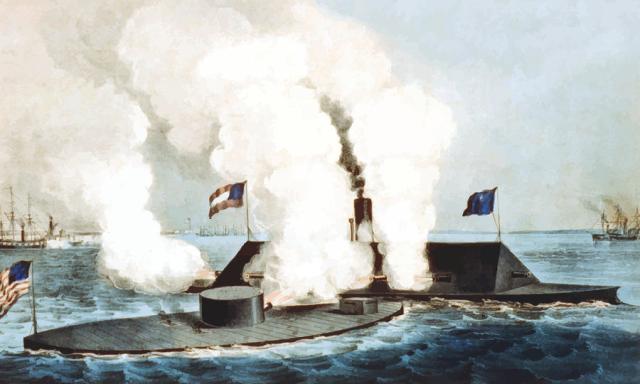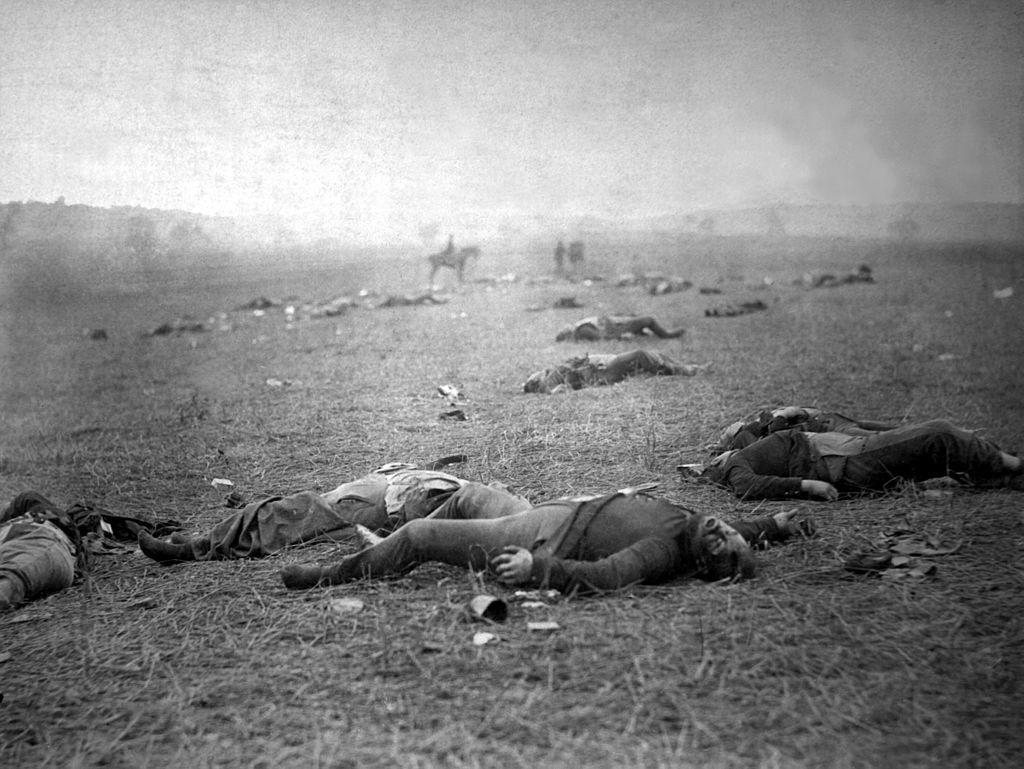
For the officers and crew of the U.S. Navy’s first iron warship, USS Monitor, tragedy struck on the last day of 1862.
While being towed through stormy seas less than 20 miles off the coast of North Carlolina, the legendary ironclad was swamped by a mammoth wave. It quickly sunk without a trace. Sixteen crewmen were drowned in the disaster. On Friday, two of those sailors will finally be laid to rest at the United States military cemetery in Arlington Virginia.
According to a piece in yesterday’s Washington Times, the Monitor’s precise resting place was unknown until the wreckage was discovered in 1973. During the past decade, dive crews have been excavating the wreck. The two sailors’ remains were located within the massive rotating turret, which originally settled on the ocean floor upside down and over the years filled with thick layers of sediment.
The Washington Times story, written by Martha M. Boltz, describes how a team of experts at the U.S. military’s POW/MIA Accounting Command used forensic techniques to reconstruct models of the sailors’ faces based on the recovered skulls. DNA samples of the men along with genealogical records have narrowed down the identity of the men to a handful of likely matches.
The two will be buried with full military honours.
To read the full story, To read the full story, click here.
The Battle of Hampton Roads
The Monitor was best known for its March 9, 1862 clash with the Confederate ironclad CSS Virginia.
While the engagement, known as the battle of Hampton Roads, involved only a dozen ships in total, it was the appearance of the two opposing ironclads that instantly captured the imagination of the world.
The fight started when the Virginia, built on the recovered hill of the scuttled Union ship USS Merrimack, steamed out of Norfolk to break the Yankee blockade. After destroying two northern warships and driving a third onto a shoal, the rebel ironclad turned to face a whole new threat — the Monitor.
The two metal beohemuths blasted away at each other for three hours, the muzzles of their guns almost touching. Eventually both ships withdrew from the fight with only light damage – each ships’ shells simply bounced off the hull of the other.
Even though there was no clear winner in the brief encounter, the combat debut of these two early steel warships signaled the beginning of a new age of naval warfare. The days of wooden navies were over – the age of battleship had arrived. Almost immediately, the major naval powers of Europe suspended production of conventional vessels and began laying down ironclads of their own.
Sadly, neither of these trailblazing ships would survive the year. In May, the Confederates destroyed the Virginia to prevent its capture by Union troops who threatened Norfolk. And as mentioned above, the Monitor would be lost in a storm on New Years Eve.










I like the helpful information you provide in your articles. I will bookmark your weblog and check again here regularly. I’m quite certain I’ll learn many new stuff right here! Good luck for the next!